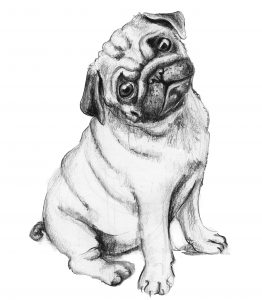FOUR REASONS A BOOK IS REJECTED
― Mwanandeke Kindembo
“Without experiencing criticism and rejection in life, it would be impossible to grow or improve yourself.”
THE NUMBER ONE REASON A BOOK IS REJECTED
Some authors assume that bookstores and libraries will automatically carry their book when it is published. This is not true.
When bookstores and libraries are presented with a book, typically through a distributor’s book catalog of new and upcoming books, then the bookstore owner or librarian makes their selections from this catalog. Bookstores and libraries purchase books from other sources, too. For example, the annual American Library Association convention is a hub of librarians coming together for education, great speakers, and thousands and thousands of books on display to peruse and pick from. A librarian or bookstore owner COULD select any book that has a DISTRIBUTABLE ISBN.
So THE most important question to ask: Is the book’s ISBN number distributable or does the book have a non-distributable ISBN? The number one reason for a bookstore to reject your book is because it has a non-distributable ISBN.
WHAT IS AN ISBN?
The ISBN is the identifier of the book. It tells who the copyright holders are and communicates not only the status of the book, available or not, but the price, the discount offered, the return status, the date the book was published, the Library of Congress number, how many books come in a box, and more.
A Distributable ISBN is exactly that—distributable. A distributable ISBN number is one that can be used by a book distributor or wholesaler to track and manage inventory of a particular edition of a book, regardless of the distribution channel.
When a book is published, the publisher assigns a different ISBN to each edition or variation of the book, such as hardcover, paperback, e-book, or audiobook.
When individuals self-publish a book, Amazon (and other book services) give free ISBNs to Amazon (KDP) published authors. “Yippee!” The author thinks, “I just saved $125! (The author doesn’t actually know the cost of the ISBN unless they’ve spent time on Bowker where ISBNs are sold.) ISBNs are expensive. Purchasing ISBNs and bar codes costs publishers dollars and is the reason many small publishers in our “modern” era of publishing have opted to become hybrid—passing on some of the costs of book production to the author.
Amazon gives only free NON-DISTRIBUTABLE ISBNs. This means that when you bring your book, all cheery and rosy-cheeked to the bookstore and say, “Please, oh please, will you carry my book?” The Amazon book is easily identifiable by its ISBN and the bookseller or librarian will notice immediately that this book you’ve handed them does not meet their standards for stocking on their display shelves.
BOOKSTORE & LIBRARY STANDARDS
Bookstores and libraries expect to receive a 55% discount on all books they purchase, and they also expect to be able to return that book for any reason, including that is simply does not sell within an allotted period of time. Most bookstores will carry a book for only a few weeks to a few months without sales before they choose to return unsold copies.
A book may be available on Amazon and still have a DISTRIBUTABLE ISBN if the publisher distributes the book to Amazon and does not use Amazon’s free number. Instead, the book has the publisher’s purchased ISBN. Now the book can be sold in the Amazon marketplace and also everywhere else books are sold. Libraries and bookstores are able to carry it. When they look up the ISBN they see the book has the 55% discount and it is returnable, assuming the publisher has selected those options.
FYI bookstores never look up books on Amazon for purchase. Never. Amazon is their nemesis.
OTHER REASONS FOR A BOOK TO BE REJECTED
There are many reasons a bookstore or library might not carry a book, even though it does have a distributable ISBN. A second reason could simply be the topic. As you know if you pay attention to book news, many bookstores and libraries are removing books from their shelves that might cover controversial topics such as race and gender.
A third reason a bookstore might reject a book is that there are already too many titles on that particular topic on their shelves right now. The bookstore is awash in horrors and because of that is being selective.
The forth reason is the look of the book. People DO judge a book by its cover! Some covers look “current” and follow the marketplace standards of design. Some covers look amateurish and bookstores, particularly, will steer away from those.
PIXELATION
One big no-no is a pixelated cover. I was told by one bookstore owner pixilation is the first thing he looks for when he is presented with a book—cover pixelation alone can get your book rejected. He’s making the assumption that if the cover is not professionally created, then neither is the rest of the book. It’s a quality thing. (What is a pixelated cover? Watch here: https://www.youtube.com/watch?v=_ONt_91egeM&t=26s)
Resolution and DPI are challenging topics for most authors. Book covers are expected to be at least 300 resolution. As a small publisher, I am often given family photos that an author would like to see in their book or used as the book’s cover, but the photo is only 1 inch by 1 inch in size. If it is an actual photograph, then it can be increased in size by scanning it at a resolution of 600 or 1200 (you can set your printer to this or have it professionally scanned.) By doing so you can double or quadruple the size of the photograph. But you cannot make it 10 times as big. There are limits. The picture described would still be too small for a 6×9 cover photo.
Another desire of authors is to see the photos they’ve taken on their phone in their book. However, most phones create pictures that are 72 resolution, and far too small to use in a print book. (NOTE: you may be able to set up your phone camera to take 300 resolution photos.)
DPI means dots per inch. It applies to print books particularly. Resolution refers to the number of pixels. The higher the resolution, the more pixels, and the clearer the photo. If you have a digital photo that is 800×600 pixels that means the digital photo is 800 pixels wide by 600 pixels long. That is very, very small when printed. Too tiny to use in a print book.
Understanding ISBNs and photo resolution can help authors make good choices about their book. The better informed the author is, the better their efforts will pay off! Before presenting bookstores and libraries with your cherished hard work, make sure your book has a distributable ISBN and a crisp, clear cover. And don’t expect it to automatically “be” in bookstores or libraries without your efforts working with your publisher to get it “placed.” If one store won’t carry it, ask another. They’re not the only store in town, it’s true. Don’t let it make you feel blue!
Bottom line: use a distributable ISBN, have your cover professionally designed, and just keep scratchin’!

“Books are a uniquely portable magic.”
– Stephen King
